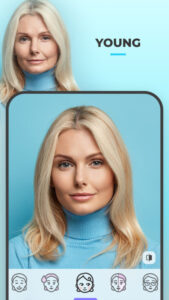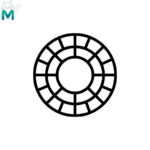Face App
FaceApp Technology Ltd
Feb 14, 2017
August 26, 2025
75.41 MB
12.7.6
Android
500,000,000+
Description
Exploring FaceApp: The AI Photo Editor Transforming Android Selfies
Face App APK is an application for Android devices that uses artificial intelligence to transform facial features in photos with filters like aging, makeup, gender swap, and hairstyle changes. FaceApp, as it’s better known worldwide, stands out among AI photo editor options by giving users a fast, easy way to edit selfies for fun, creativity, and sometimes, self-discovery. Type “change my hair with one tap” into your preferred search engine, and you’re likely to see this app topping the charts no surprise considering its popularity among Android users. I still remember the first time I let the “old age” filter loose on my selfie let’s just say my friends had a field day, and so did I! But, between bouts of laughter, I noticed just how convincing these changes looked. With more than a billion downloads, FaceApp has shaped trends on social media and offered new ways for people to experiment with their images, often resulting in viral photo filter challenges on platforms like Instagram. This article explores the strengths, quirks, and practical steps to help you get the most from this AI-driven editor, all while keeping in mind both the creative upsides and some cautionary notes.
Essential AI Tools in FaceApp: Age Filter, Gender Swap, Makeup Tool, and More
FaceApp packs a broad toolkit designed to transform faces in photos with the swipe of a finger. Whether you’re freshening up your look for Instagram, spoofing age, or tweaking your expression, its suite of filters uses neural networks to make impactful changes rapidly and with surprising realism.
Facial Transformation Filters
The backbone of FaceApp lies in its facial transformation filters. These are the powerhouse features that have made it a household name in the English language market and beyond.
- Instant Age Filters let users see themselves older or younger in seconds, employing a sophisticated age filter algorithm. With a single tap, you can try on wrinkles and silver hair or relive your youth with smooth skin no manual adjustments required. This tool is the equivalent of time travel with your selfie.
- Gender Swap Tools adjust facial structure, hairstyle, and stubble to realistically simulate the opposite gender. Many use this for entertainment, while others explore personal identity via the gender swap function.
- Face Swap (formerly available) allowed for merging features from multiple faces; while this face swap feature was a favorite, its removal in 2023 caused plenty of user frustration.
- Impressions switch up facial expressions and moods, such as transforming a neutral look into a “smile” or “model pose.” The impression filter enables quick adjustments to emotion and appearance.
- Background editing enables automatic adjustment or background replacement, putting you at the beach, in a studio, or nearly anywhere you choose, all while blending naturally.
These filters perform best on clear, well-lit photos with a direct view of the subject’s face. Side angles and group shots sometimes baffle the neural network-powered AI, but updates are improving accuracy across diverse features and skin tones.
Style and Enhancement Options
FaceApp goes beyond transformations, offering a range of creative and style-based edits.
- The makeup tool produces results that often rival professional touch-ups. Lipstick, blush, eyeliner, and even complex looks like “Glam” or “Natural” pop instantly.
- Hair color and hairstyle change options let you become a redhead, try bangs, or test out wild colors without the salon risk. You can even virtually add glasses or hats.
- Light and impression filters provide subtle touch-ups. These enhance skin tone, tweak brightness and contrast, and add depth useful for casual portrait upgrades.
- Artistic overlays and photo filters transform basic images into share-ready content by letting you borrow styles from other photos, create composites, or blend in special effects.
- Beard and facial hair options enable you to try on different beard types, stubble levels, or even remove facial hair completely.
- Body adjustments (weight filters) offer body reshaping, although these are less precise and often give mixed results.
The continuous evolution of these tools keeps the app fresh and makes returning users excited for new options.
FaceApp Output: Realistic Photo Filters, Neural Network Performance, and Limitations
While impressive features get users in the door, speed and realistic output determine if they stick around. FaceApp focuses on delivering fast, polished results for both free and Pro subscription users.
Speed and Efficiency
FaceApp processes most edits in seconds thanks to lightweight neural networks and cloud-based AI.
- Quick Rendering: One-tap filters yield real-time previews; no fighting with sliders or waiting for complex adjustments.
- Batch Processing (Pro): Paid subscribers can process multiple photos at once, perfect for editing a group of selfies for a big event.
- Minimal device lag is reported on most modern phones, though older hardware may see longer processing times.
In practice, the convenience factor is huge. I can snap a selfie, age myself, and send it to friends all before they reply to my previous message. The efficiency is impressive, but power users may notice slowdowns if attempting complex composites or if their device is running background apps.
Photorealistic Results and Limitations
FaceApp shines with photorealistic changes that blend seamlessly into photos.
- Natural Edits: Subtle changes like removing blemishes, enhancing smiles, or adding light makeup look convincing. Most people won’t guess the photo has been edited unless you crank effects up to the extreme.
- High-Resolution Outputs: Pro subscription users enjoy export up to 4K, making prints or professional social posts easy.
- Limitations: Sometimes, edits cross into the “uncanny valley” with waxy skin or oddly altered bone structures. Low-light or profile photos can confuse the AI, producing errors or missing key features.
- Biases: The software sometimes lightens skin tones or tweaks facial features toward standardized beauty ideals, drawing criticism for a lack of diverse representation.
A table helps summarize the most reliable and the most challenging edits:
| Feature | Consistency | Quality | Notes |
| Age filters | High | Realistic | Best with full-face, well-lit photos |
| Gender swap | Medium | Varies | Works, but may skew features |
| Makeup | High | Subtle | Natural look, less reliable on profiles |
| Background swap | Medium | Good | May blur edges if hair blends in |
| Artistic overlays | High | Creative | Relies heavily on initial photo quality |
| Body (weight) tools | Low | Mixed | May create distortions on group shots |
Enhancing FaceApp Editing: Pro Tips for Batch Processing, Impression Filters, and Selfie Workflow
FaceApp’s design encourages experimentation, but a few tips turn the app from “fun toy” into “power tool” especially if you want results that truly impress.
Effective Editing Strategies
- Start with a sharp, well-lit selfie. Natural light works best and reduces errors.
- Apply subtle filters one at a time. Layering small changes (like a mild impression filter followed by slight hairstyle change) produces more believable results than maxing everything out at once.
- Save presets for common edits. FaceApp allows this, but some users note presets can vanish with updates so take screenshots of settings you may want to repeat.
- Mark edited images as “modified” before sharing. Honest labeling prevents others from assuming edits are real, a tip appreciated by social media users wary of unmarked photo uploads.
- Use the compare tool. This toggles instantly between before-and-after views, helping you fine-tune or undo changes that don’t fit your style.
My favorite trick is staging several different edits of the same photo just to see which friends notice my “new look” first. It never fails to start a conversation.
Workflow Optimization
- Try the app’s in-built photo upload from cloud or device gallery to quickly switch between sources.
- For speed, close unused apps on older phones to reserve processing power.
- Export at the highest resolution offered for prints or archiving, but pick compressed formats like JPEG for casual sharing.
- Use FaceApp offline for simple edits if data privacy is a concern, but remember that the most advanced AI photo editor filters require an internet connection.
Batch processing, available in the Pro subscription tier, is a big upgrade for those who edit lots of photos at once, like event planners or bloggers needing consistent filters across albums.
FaceApp Pro Subscription and In-App Purchases: Watermark, Features, and Billing Guide
FaceApp offers a dual-tier model balancing free features and premium upgrades, letting users explore at their own pace before deciding to pay.
Free vs. Pro Features
- The free version covers basic aging, impression, and style filters, with watermark on exports, limited tool access, and (often loud) ads.
- Pro subscription removes ads, unlocks all filters, and enables high-resolution exports, batch processing, and fine-tuned controls like saturation and lighting.
- Free users quickly hit edit limits, encouraging many to try the full set of options with a short Pro trial.
While most casual users are satisfied with free options, regular editors or creators looking for professional results find value in going Pro.
Subscription Considerations
- Pro subscriptions auto-renew and are managed through in-app purchase systems. This occasionally leads to frustration over billing or lost features after updates.
- Some users report favorite features (like the face swap function) being removed after upgrading, with support slow to resolve issues.
- Subscription unlocks new tools and speeds, but offline access is still limited by what processes locally vs. in the cloud.
Consider tracking which tools you actually use the value of Pro largely depends on your editing habits. Heavy users and web influencers tend to get the most out of paid upgrades.
Android Device Support for FaceApp: Photo Upload, Compatibility, and Usage Scenarios
FaceApp optimizes for a variety of Android hardware, from flagship phones to mid-tier options. It also delivers a consistent experience for users.
Device Performance
- Most modern smartphones handle edits smoothly, with little battery drain during short sessions.
- Intensive editing or long, multi-photo sessions may warm up the device, and older phones sometimes experience slowdowns or crashes.
- Storage demands are light unless saving many full-resolution exports, as the app processes edits in-memory rather than permanently bloating storage.
A quick tip enable high-performance mode in the app’s settings if available, especially if your edits seem sluggish.
Use Cases and Ideal Users
FaceApp’s target audience covers a broad spectrum:
- Social media enthusiasts who want quick, standout selfies.
- Creative hobbyists exploring new looks or visual identities.
- People wanting to preview real-world changes without commitment like new hairstyles or cosmetic makeovers.
- Digital content creators seeking engaging images or meme material.
However, those seeking photographic realism for professional projects sometimes find FaceApp’s outputs exaggerated or inconsistent versus manual editing in advanced tools.
Using FaceApp Responsibly: Privacy Policy, Creative Guidelines, and Well-being
Great power comes with responsibility, even in photo editing!
Achieving the Best Results
- Favor natural edits over extreme ones audiences respond best to subtlety.
- Always choose high-quality input photos; avoid grainy, shadowed shots.
- For identity exploration through gender swap or hairstyle change features, treat app results as helpful inspiration, not as exact predictions of real-life changes.
When I tried out new hairstyles virtually, the app helped narrow choices, but my barber’s hands-on expertise proved the final judge!
Mindful Editing and Well-being
- Be wary of falling into perfection traps; app-edited portraits can set unrealistic standards.
- Discuss edits openly if sharing with friends, particularly among younger users inclined to compare themselves to enhanced selfies.
- Review the privacy policy if data security is important; avoid uploading sensitive images and clear history periodically.
Moderate use for creativity and fun is the best formula. Treat FaceApp as a digital playground rather than a mirror.
FaceApp AI Photo Editor for Android: Key Takeaways for Selfie Transformations
Face App APK, as a leading AI photo editor for Android, empowers millions to experiment with looks, styles, and self-expression through a broad range of filters and features. Its speed, photorealistic outputs, and accessible design make it a favorite for casual users and content creators alike, while its limitations occasional bugs, feature removals, the effect of watermark in the free version, and the potential for unrealistic beauty standards remind us to approach results with playfulness and a touch of skepticism. Smart usage and a little self-awareness help you get the most benefit: whether using batch processing to edit multiple selfies at once, previewing a new haircut, or fine-tuning that next Instagram post. As with any creative tech, FaceApp works best as a springboard for ideas so keep experimenting, share responsibly, consult the privacy policy, and never underestimate the power of a well-timed selfie transformation through your favorite AI photo editor.
Images










